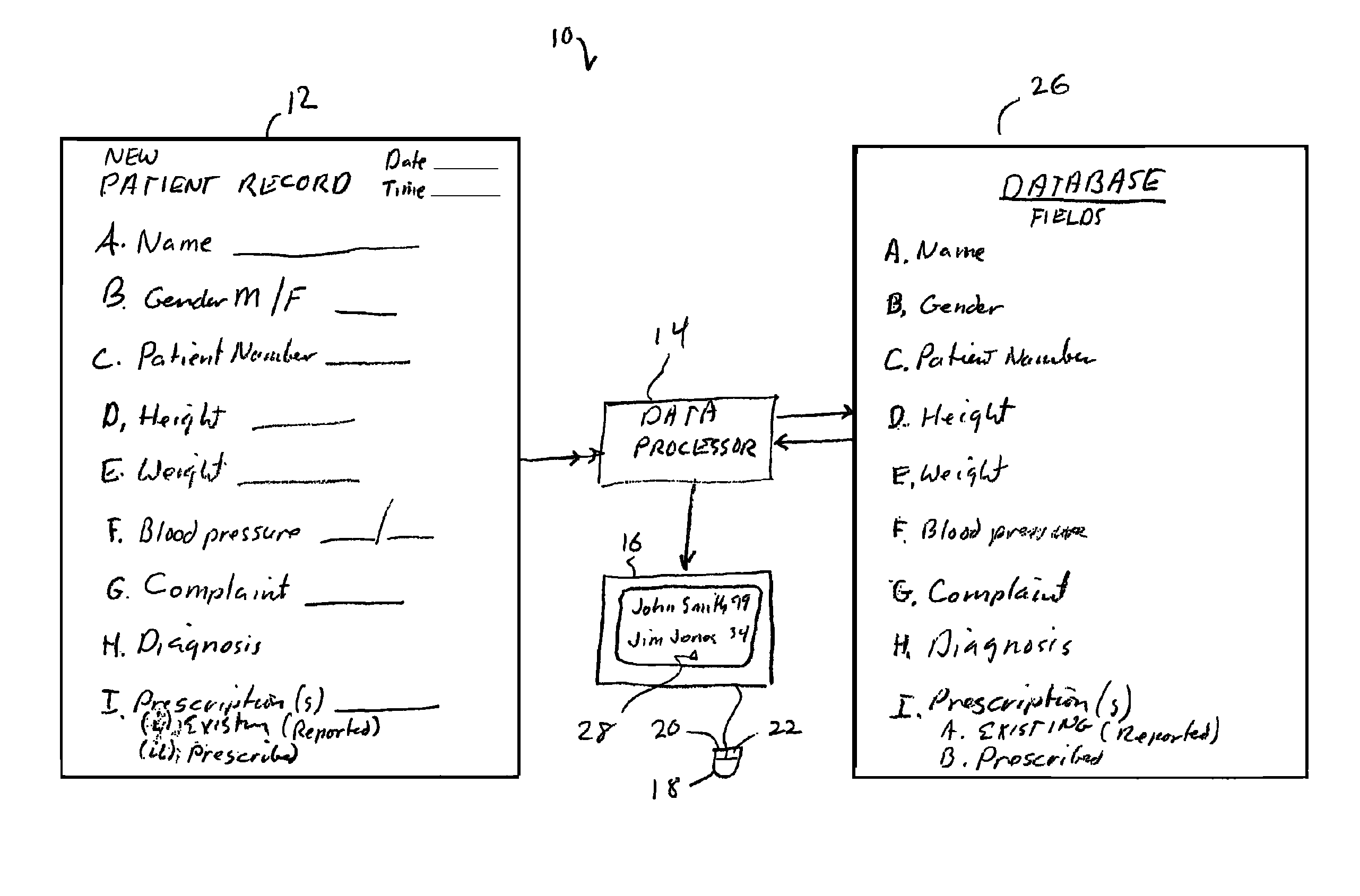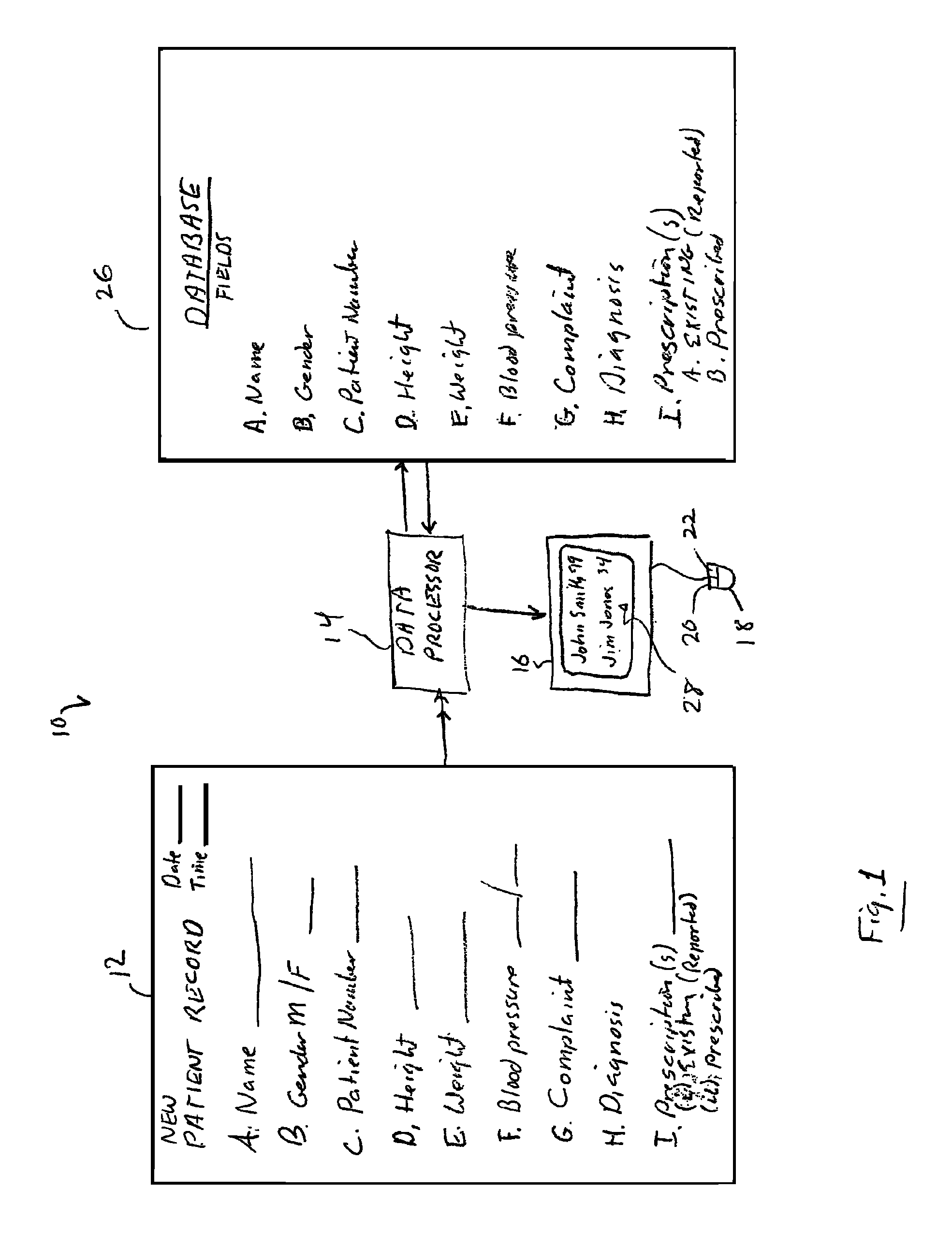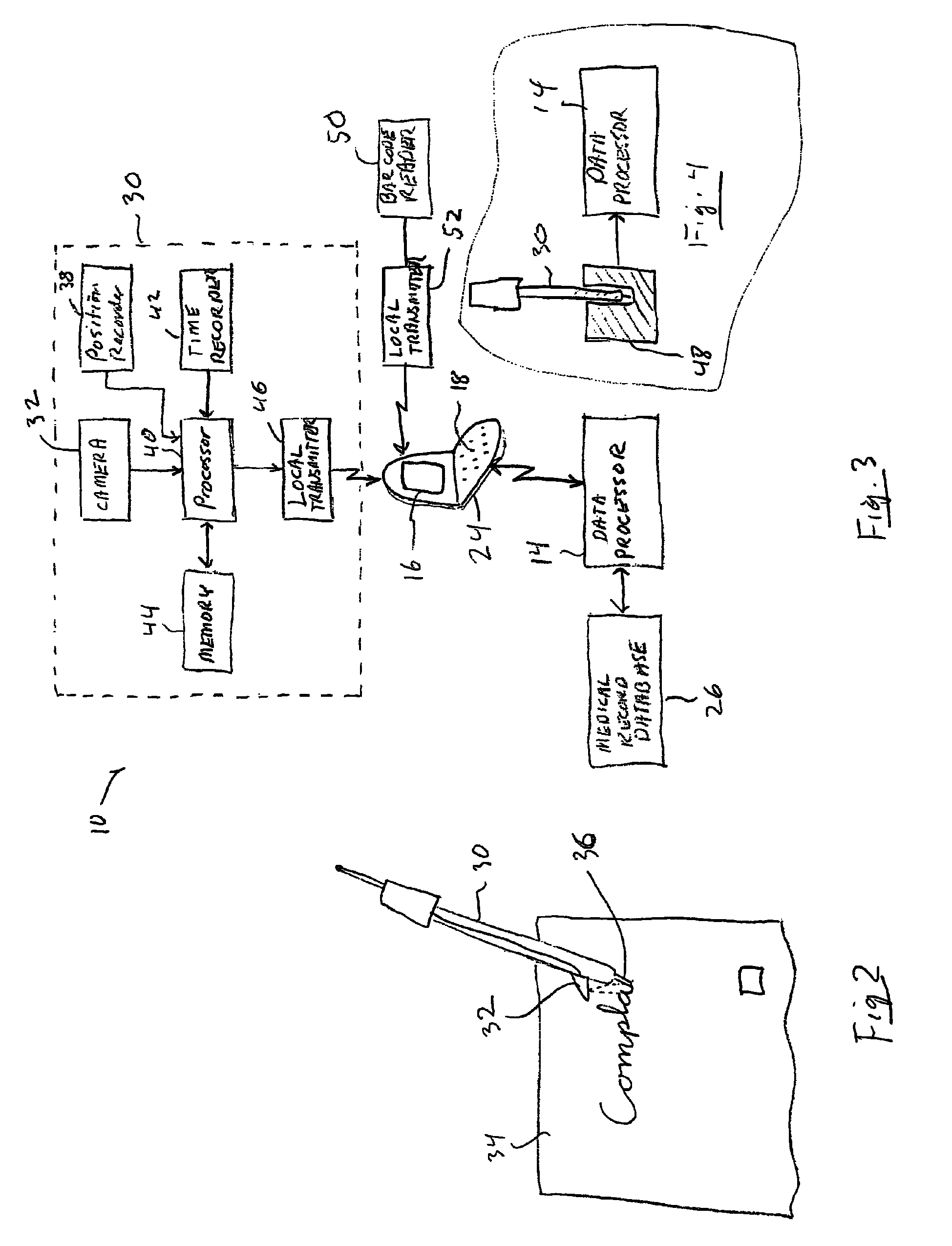Association of data entries with patient records, customized hospital discharge instructions, and charting by exception for a computerized medical record system
a computerized medical record system and data entry technology, applied in data processing applications, instruments, healthcare informatics, etc., can solve the problems of not fully or legibly recording patient information, difficult to train and motivate physicians used to making paper notes, and inconvenient to make paper notes
- Summary
- Abstract
- Description
- Claims
- Application Information
AI Technical Summary
Benefits of technology
Problems solved by technology
Method used
Image
Examples
Embodiment Construction
[0041]The following discussion relates to specific aspects of the inventions described in the Summary section of this specification, and various embodiments and alternatives that are contemplated. The following disclosure should be understood to exemplify the invention. The inventions described here are not limited by the particular described embodiments and alternatives.
Associating a Medical Record with the Corresponding Patient
[0042]Referring to the drawing figures, one aspect of the invention is apparatus generally indicated at 10 for associating an electronic patient record generally indicated at 12 with the corresponding patient, and for other purposes as further explained below. One use of the invention is to reduce or eliminate the ambiguity in definition of the patient corresponding to the medical record 12.
[0043]The apparatus includes a data processor 14, a display 16, and a choice input 18. In the apparatus of FIG. 1, the display 16 is a conventional computer display, such...
PUM
 Login to View More
Login to View More Abstract
Description
Claims
Application Information
 Login to View More
Login to View More - R&D
- Intellectual Property
- Life Sciences
- Materials
- Tech Scout
- Unparalleled Data Quality
- Higher Quality Content
- 60% Fewer Hallucinations
Browse by: Latest US Patents, China's latest patents, Technical Efficacy Thesaurus, Application Domain, Technology Topic, Popular Technical Reports.
© 2025 PatSnap. All rights reserved.Legal|Privacy policy|Modern Slavery Act Transparency Statement|Sitemap|About US| Contact US: help@patsnap.com



